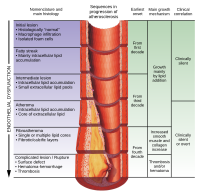
Photo from wikipedia
AIMS We determined the prevalence of prescription smoking cessation pharmacotherapy (SCP) use after hospitalisation for major cardiovascular disease among people who smoke and whether this varies by sex. METHODS We… Click to show full abstract
AIMS We determined the prevalence of prescription smoking cessation pharmacotherapy (SCP) use after hospitalisation for major cardiovascular disease among people who smoke and whether this varies by sex. METHODS We conducted a population-based cohort study including all people hospitalised in New South Wales, Australia, between July 2013-December 2018 (2017 for private hospitals) with a major cardiovascular disease diagnosis. For patients who also had a diagnosis of current tobacco use, we used linked pharmaceutical dispensing records to identify prescription SCP dispensings within 90 days post-discharge. We determined the proportion who were dispensed an SCP within 90 days, overall and by type of SCP. We used logistic regression to estimate the odds of females being dispensed an SCP relative to males. RESULTS Of the 150,758 patients hospitalised for a major cardiovascular disease, 20,162 (13.4%) had a current tobacco use diagnosis, 31% of whom were female. Of these, 11.3% (12.4% of females, 10.9% of males) received prescription SCP within 90 days post-discharge; 3.0% (were dispensed varenicline, and 8.3% were dispensed nicotine replacement therapy patches. Females were more likely than males to be dispensed a prescription SCP (OR 1.16, 95%CI 1.06-1.27); however, this was not maintained after adjusting for potential confounders (aOR 1.04, 95%CI 0.94-1.15). CONCLUSION Very few females and males who smoke use prescription SCPs after hospitalisation for a MCD. Use of varenicline, the SCP with the highest efficacy, was particularly low. This represents a missed opportunity to increase smoking cessation in this high-risk population, thereby reducing their risk of recurrent cardiovascular events.
Journal Title: European journal of preventive cardiology
Year Published: 2022
Link to full text (if available)
Share on Social Media: Sign Up to like & get
recommendations!